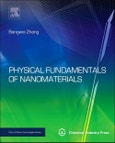Physical Fundamentals of Nanomaterials systematically describes the principles, structures and formation mechanisms of nanomaterials, in particular the concepts, principles and theories of their physical properties as well as the most important and commonly used preparation methods. The book aims to provide readers with a basic understanding of how nanomaterials are synthesized as well as their resultant physical properties it therefore focuses on the science of nanomaterials rather than applications, serving as an excellent starting point for researchers, materials scientists and advanced students who already possess a basic knowledge of chemistry and physics.
Please Note: This is an On Demand product, delivery may take up to 11 working days after payment has been received.
Table of Contents
1. Introduction 2. Principles, Methods, Formation Mechanisms, and Structures of Nanomaterials Prepared via Gas-Phase Processes 3. Principles, Methods, Formation Mechanisms, and Structures of Nanomaterials Prepared in the Liquid Phase 4. Principles, Methods, Formation Mechanisms, and Structures of Nanomaterials Prepared via Solid-phase Syntheses 5. Principles, Methods, Formation Mechanisms, and Structures of Nanomaterials Prepared via Self-Assembly 6. Mechanical Properties of Nanomaterials 7. Thermal Properties of Nanomaterials 8. Optical Properties of Nanomaterials 9. Electrical Properties of Nanometer Materials 10. Magnetic Properties of Nanomaterials








